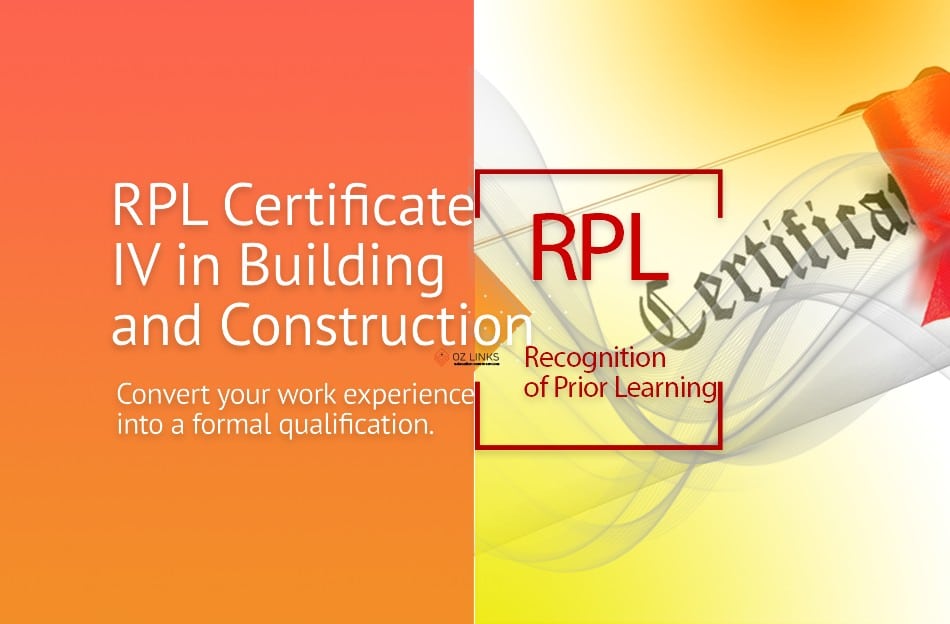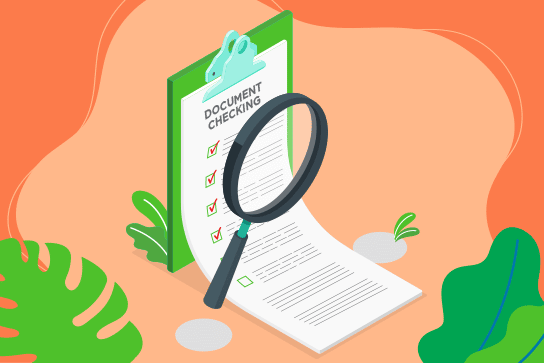Last Updated on May 14, 2025 by Ozlinks Education
Have you been working in building construction but haven’t obtained your qualification? You’re in the right place. The Recognition of Prior Learning (RPL) program provides a pathway to convert your skills and work experience into a formal Certificate IV in Building and Construction, offered through our Registered Training Organisation partners. Let’s get your skills certified!
Certificate IV in Building and Construction Overview
The CPC40120 Certificate IV in Building and Construction is designed for individuals seeking employment in the building construction industry as builders, site managers, and managers of small to medium-sized building businesses. Participants will apply knowledge of structural principles, codes, standards, and legal requirements relevant to Class 1 and 10 buildings, up to a maximum of two stories, as well as Class 2 to 9 Type C constructions. Furthermore, they will plan and supervise safe building and construction work, prepare and administer contracts, and apply quality principles to construction projects.
Building relates to construction, and site management is about managing the factors around construction, such as the deployment of crews with specialised skills (including builders), product compliance, deployment of contract specialised skills, weather, and site location. Consider obtaining this certificate to register as a licenced builder and site supervisor. Licencing varies across states and territories, and additional requirements for attaining this qualification may be required.
To achieve this qualification, competency must be demonstrated in:
19 units of competency must be completed:
- 11 core units
- 8 elective units
Job titles: Builder, Construction Supervisor
Why do I need the Certificate IV in Building and Construction?
If you have been working as a leading hand, site supervisor, or construction supervisor in the residential or commercial building industry but have not yet obtained your qualification for any reason, pursuing an RPL program for this certification can significantly enhance your career in the building and construction sector. Additionally, it will assist you in meeting the requirements for becoming a licenced builder, allowing professionals to legally undertake residential, commercial, and industrial building and construction projects throughout Australia.
In Australia, if you wish to work as a builder or tradesperson, you must obtain a licence or be registered, depending on your state or territory. Before applying for your licence or registration, you will need to acquire a combination of experience, technical qualifications, skills, and knowledge. The first step in this process is to complete training for the relevant qualifications in your state or territory. In some states, you may also need to engage in ongoing training workshops to maintain your licence or registration.
Ozlinks Education can assist you in transforming your skills and work experience into a formal Certificate IV in Building and Construction through the Recognition of Prior Learning (RPL) program with one of our Registered Training Organisation partners. Our expert team will assess your individual circumstances and provide tailored support to ensure that you achieve the qualifications necessary to advance your career.

What does a construction builder do?
A builder are responsible plans, organises, directs, regulates, and coordinates the construction, alteration, and rehabilitation of houses and other structures, as well as the physical and human resources involved in the construction process.
Their job involves:
- interpreting architectural drawings and specifications.
- coordinating labor resources, and procurement and delivery of materials, plant, and equipment
- consulting with Architects, Engineering Professionals, and other professionals, and Technical and Trades Workers.
- negotiating with building owners, property developers and subcontractors involved in the construction process to ensure projects are completed on time and within budget.
- preparing tenders and contract bids
- operating and implementing coordinated work programs for sites.
- ensuring adherence to building legislation and standards of performance, quality, cost and safety.
- arranging submission of plans to local authorities.
- building under contract or subcontracting specialized building services.
- overseeing the standard and progress of subcontractors’ work.
- arranging building inspections by local authorities.
What is Recognition of Prior Learning?
The Australian Qualification Framework (AQF), which is governed by the Australian Government’s Department of Education in consultation with the states and territories, gives all students the right to have their prior education, relevant work experience, and training acknowledged to facilitate their advancement towards and between qualifications. Every registered training organisation (RTO) has its own policies and procedures for determining your RPL eligibility, but the fundamentals are the same. The experience and skills you’ve gained through your work can help you complete a qualification faster and reduce the time commitment of taking a course to get you closer to your dream job.
The advantages of using RPL program
Recognition of Prior Learning (RPL) program offer numerous benefits, including time and cost savings by validating existing skills and experience, expedited qualification achievement, and improved employment prospects. RPL program helps you:
- There is no need to relearn what you already know.
- It saves both your time and tuition fees.
- Assist you in achieving your career change objectives in Australia.
- Gaining an Australian qualification requires less time.
- You do not need to attend classes or redo the training you have already completed.
- Open new career opportunities in the building industry.
- Obtain a qualification to satisfy the visa or skills assessment requirements
Evidence requirements
Below is the general list of documents that you are required to provide to support your RPL assessment application:
- 100 points of identification documents (ID)
- A current resume outlines your relevant employment
- Student USI number
- A white card or any other relevant license
- Employment evidence, including an employment reference letter, employment contract, payslips, income statement, and superannuation.
- Workplace photos and videos showcasing yourself performing your tasks according to the job duties mentioned above demonstrate your competency in the applied qualification.
Note: Additional gap training may be required to address any areas needing improvement and to ensure a positive assessment outcome. An RTO assessor may conduct a competency interview with you to identify any existing training gaps related to this Certificate IV in Building and Construction.



